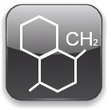Thermoplastic Elastomer
Elastomers TPE > Segmented
| TPE Thermoplastic elastomers | |
| Elastomers | |
Thermoplastic elastomers (TPE) are a class of polymeric materials that have the elastic behavior of rubber and the processability of thermoplastics. Rubbers have been of strategic importance since the beginning of the automotive industry. Thermoplastic elastomers can function as a rubber material. They also have the ability to be reprocessed when heated above the melting transition temperature. The TPE has the behavior below the melting temperature of being elastic as a thermoset rubber. The source of this behavior varies with the chemistry and structure of the TPE. This reprocessing capacity addresses the recyclability limitation of thermoset rubbers, therefore, there is little scrap when processing thermoplastic elastomers. This gives TPEs a significant economic advantage. Also unnecessary. TPE items can be re-melted and reprocessed to recover the waste material. Usually this is done by grinding the items to make a TPE crumb that is mixed with virgin TPE during processing. This TPE capability provides a significant environmental impact, as well as an economic impact. These advantages over conventional thermoset rubbers along with a wide selection of performance capabilities and processing options give the TPEs promised to continue their high growth rate. |  |
| Thermoplastic elastomers structure | |
| The double capacity of elastomeric properties and recyclability are achieved using one of several approaches to prepare the TPE. The three main types of TPE are: • block copolymers, • rubber / plastic mixtures • dynamically vulcanized rubber / plastic alloys called thermoplastic vulcanizates Each of these achieves the characteristic elastic performance of a rubber in different fashions. The double-phase nature combined with the polymer chemistry dictates the performance capabilities of the TPE. The TPEs form a continuous domain of softer and elastic chains. These are held together by the crystalline domains having the copolymer chains blocked together in a crystalline structure. When these copolymers are deformed the hard blocks remain crystalline and do not deform The soft rubber domain easily deforms and provides a gummy behavior. The recovery of these materials is good as long as the domains are not too tight and the temperatures are well below the crystallization temperature. On the crystalline melting temperature the chain block copolymer are no longer blocked in their position and all the chains are free to flow. In the melting temperature range a block copolymer will be easily processed in typical thermoplastic processing equipment this behavior is exhibited by all the block copolymer TPE. |  |
| Clasification | |
Thermoplastic elastomers The thermoplastic elastomers are classified, according to ISO 1043, with the abbreviation TPE (thermoplastic elastomers), at the end of the acronym TPE, it is added to a chart that determines the chemical nature, block copolymers: TPE - Often abbreviated as TPA opure COPA TPE- E TPEE often abbreviated or TPC-ET, COPE, TEEE TPE- S often abbreviated as TPS or SBS, SEBS TPE- U often abbreviated as TPU rubber / plastic mixtures: TPE- V often abbreviated to TPV TP-O often abbreviated as TPO | |
| α-olefines POE | |
A new development, based on the new metallocene catalyst, to polymerize olefins has led to a different class of block copolymers. Controlling the monomer sequences and molecular structure allowed the development of a technology to make copolymers of ethylene content with alpha-olefins. These block copolymers are called polyolefin (COP) plastomers and have higher elasticity, strength and improved processing. Similarly, copolymers of low ethylene content with α-olefins, called polyolefin elastomers (POE), have been developed and are softer and highly elastic being a thermoplastic. These new olefins have some similarity to olefin mixtures, but have distinct advantages by having a crystalline section and a gummy section in a single copolymer. |  |
| Block copolymers | |
The first TPEs were made by customizing molecules of copolymers consisting of a multiple block or three block copolymer structure. The final block of the copolymer molecules will crystallize. These copolymer molecules are bonded when they are below the melting temperature, thus virtually forming a crosslinked network. Between these crystallized ends is the central block which is amorphous and has rubber-like properties in the range of ambient temperature. These block copolymers can be divided into classes based on their chemistry. They include: • styrene block copolymers (SBC) • copolyesters (COPE) • Thermoplastic polyurethanes (TPU) • copolyamides (COPA) |  |
| TPO | |
One of the first thermoplastic elastomers was prepared by mixing a rubber and a thermoplastic polymer. Rubber and plastic polymers should be somewhat incompatible with each other. The most popular rubber / plastic blend is polypropylene with EPDM or ethylenepropylene copolymer rubber (EP) and is called thermoplastic olefin (TPO). These polymers form separate phases. In some TPOs, the EPDM rubber is partially or slightly cross-linked TPV. In some situations the rubber phase can be a continuous phase. The rubber particles also change shape freely. This allows TPO to flow freely and results in good injection processing characteristics. The rubber / plastic mixtures and especially the TPO are made of low cost materials. They enjoy a wide use where the temperature or fluid performance requirements are not excessively high. New developments in rubber / plastic blends are directly related to the development of new rubber or plastic polymers. Recent advances based on technology with metallocene catalyst have been developed new ethylene / α-olefin copolymers and have already begun to have an impact on the technology (TPE 4th Generation) of commercially available TPOs. TPOs can now be made in the reactor as reactors rTPOs reducing manufacturing costs. |  |
| Thermoplastic vulcanizate | |
A third class of TPE is thermoplastic vulcanizate (TPVs). The designation used in TPV generally refers to the EPDM / PP compound. TPVs are usually prepared by dynamic vulcanization first performed by Fisher, but not applied to the development of a complete cure. The first fully cured EPDM / PP TPV was developed by Coran and Patel. TPVs have grown in commercial use becoming one of the main classes of TPE. A TPV is a mixture of thermoplastic with completely crosslinked, ie vulcanized, rubber. The thermoplastic is the continuous phase and the rubber is crosslinked. TPVs are prepared by dynamic vulcanization where the rubber phase is crosslinked during the mixing process when the polymers are mixed together. The crosslinking of the rubber phase is almost 95% and must exceed 97% to have a good resistance to fluids, recovery and retention of seal stress. The properties of TPVs are close to those of a thermosetting rubber due to the complete vulcanization of the rubber phase. The best physical properties are achieved when the particles are approximately 1 μm in diameter. The TPVs are made with a variety of rubber and plastic pairs. The most common are the EPDM / PP TPV. The POS provides a great advantage by eliminating the need for drying before processing. |  |
| TPV HT | |
There are new developments in TPV based on dynamic vulcanization of the highest temperature rubber and plastic combination of ethylene-acrylate rubber and polyester (polyethylene terephthalate (PET) or polybutylene terephthalate (PBT)), called TPE 3rd generation. new TPV based on silicon-labeled rubber TPSiV has been developed and marketed These TPVs provide higher temperatures and / or higher resistance to fluids than PP-based TPs The available TPV products have also been expanded to develop new grades that have Enhanced features.PVT next-generation products that have been developed that have very low hygroscopicity and can be processed without drying.These next-generation TPVs also have very high colorability.Require less colorant and lighter, brighter colors can be achieved. These POS are marketed with specific grades optimized for extrusion processing or by injection molding TPV products that have a link to a variety of substrates have been introduced. | |
| Propiedades mas importantes para los elastomeros | |
TPE useful for any given application: Hardness: The hardness of the soft TPE is measured on an arbitrary scale, by means of a spring load indenter, which uses a durometer. Compression set: The most important property of the TPE subject to compression loads. The compression set depends on the temperature of the TPE, the time the rubber has been at the test temperature, the degree of deformation, and the composition of the TPE and curing if it is. The TPE does not have sufficient volumetric compressibility to allow its use as a compression spring; it can only be used as a spring, when lateral expansion is not obstructed. Traction: The diagram represents the stress - strain data, after several cycles of application of the stress and the modulus of elasticity is greater than what is indicated, after the application of numerous loading and unloading cycles. Elastic resilience: The ability of the elastomer to absorb energy elastically is known as elastic resilience. Accumulated energy up to the elastic limit. The good resilience of the elastomers justifies its use as a means to absorb shock loads. The elastomers have about 3 times the resilience of a high strength steel. Fluency: The creep increases with the increase in temperature. Vibratory loads produce more fluency than static charges, and the higher the vibrations, the greater the effect. Histéresis: Se denomina también fricción interna del elastómero, significa la conversión de energía mecánica en térmica, cuando se carga y se descarga el mismo. Cuanto más blando sea el elastómero, menor será su eficiencia para absorber energía mecánica, mediante su conversión en energía térmica. La conversión de energía mecánica en energía térmica es menos eficiente a temperaturas elevadas. Fatiga: La carga estática requerida para que se produzca una ruptura en el elastómero, es menor cuanto más prolongado sea el tiempo de su aplicación. La vida dinámica de fatiga se acorta apreciablemente por las temperaturas muy por encima de los 40ºC o muy por debajo de -7ºC. |
